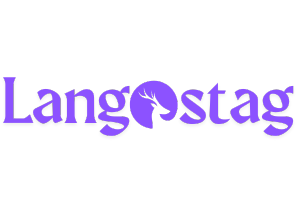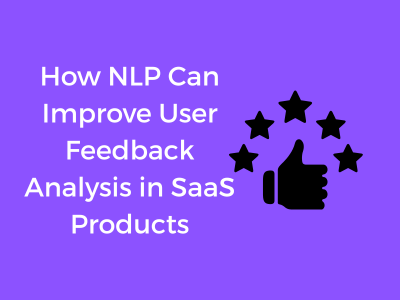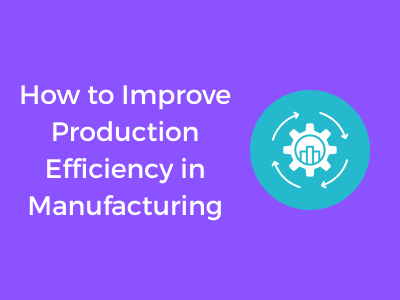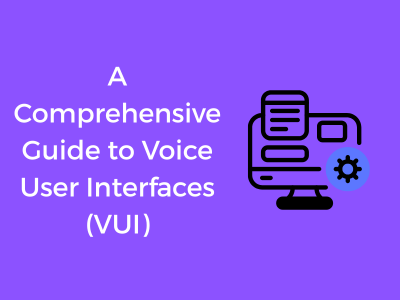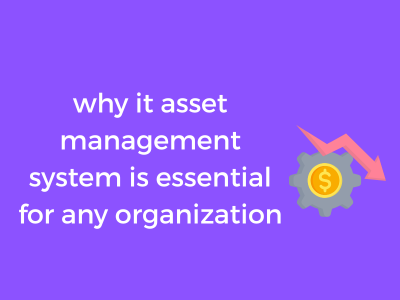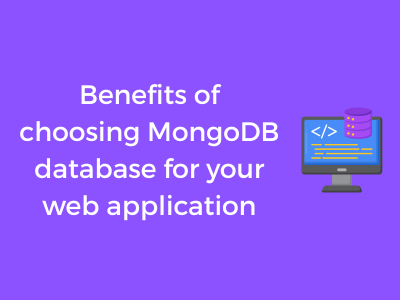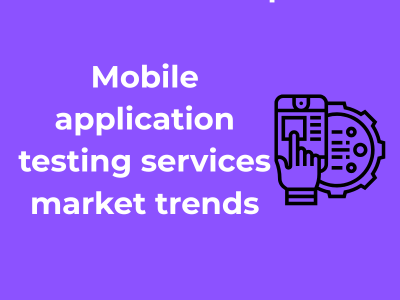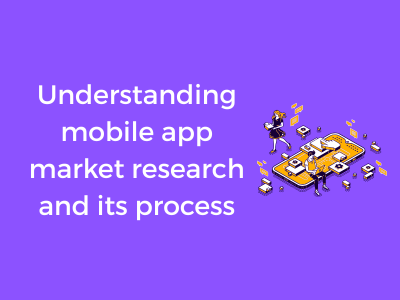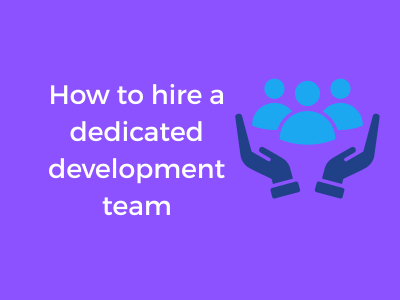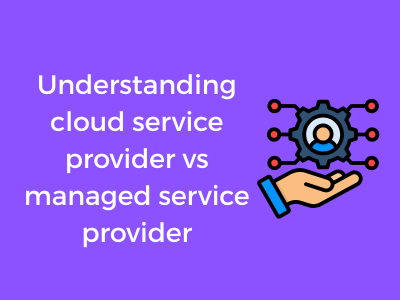Let’s talk about something that sounds complex but is actually somewhat closer to everyday life than you think: Natural Language Processing, or NLP for short. If you’re scratching your head already, hold on — I’m here to simplify it. Imagine a tool that helps computers understand, interpret, and even respond to human language. That’s NLP in a nutshell!
The Basics: What Exactly Is NLP?
NLP is a combination of linguistics, computer science, and machine learning. Technically, it’s the magic that powers applications you use every day — voice assistants like Siri and Alexa, search engines like Google, and even chatbots you might have complained to about your latest product woes.
In the context of SaaS (Software as a Service) businesses, NLP plays a crucial role in analyzing feedback from users. Instead of relying on humans to sift through heaps of freeform comments, star ratings, or surveys, NLP can automate this process, finding trends, detecting sentiment, and categorizing responses.

Why It’s a Perfect Fit for Feedback Analysis
Great feedback is the backbone of any growing product. But let’s be honest — it’s messy. Your users could be giving you a treasure chest of insights, but when it’s buried under typos, slang, or lengthy complaints, it becomes tough to extract anything useful. Enter NLP!
- Efficiency: NLP can process thousands of feedback entries much faster than any human team could dream of.
- Deeper context: It doesn’t just read words; it analyzes tone, context, and emotions, giving you a richer understanding of what your users truly feel.
- Scalability: Whether you’re dealing with 500 survey responses or 50,000 reviews, NLP scales seamlessly while maintaining accuracy.
Making Sense of Freeform Feedback
Every SaaS product generates tons of written feedback. From customer service tickets to social media comments, the unstructured text can seem chaotic. Here’s where the real beauty of NLP lies — it brings structure to the chaos. With tasks like sentiment analysis, keyword extraction, and topic modeling, you can turn that overwhelming pile of text into meaningful insights.
For example:
- You can find out if users frequently mention performance issues or a specific feature request.
- Discover how users feel when they describe their experience — happy, frustrated, or neutral?
- Spot recurring themes, such as pricing complaints or UX difficulties, without manually reading every single comment.
Why Does It Matter Now More Than Ever?
In today’s fast-paced, user-centric world, understanding your customers has gone beyond just reading numbers in metrics dashboards. To stay competitive, SaaS companies must actively listen to their users. NLP serves as your ears that can hear all customer voices at scale.
Moreover, this isn’t just about collecting insights for the sake of it. With NLP, you can act faster. If a prominent issue arises, NLP will identify it early on, allowing your team to tackle it proactively and improve your product in real time. Clear examples? Bug fixes, feature improvements, or even changing your communication style with users.
The Takeaway
Think of NLP as your secret weapon for breaking down feedback and reading between the lines (literally). By leveraging it, you aren’t just saving time — you’re actively fostering a stronger relationship with your users. Because, let’s face it, when users feel heard, they’re more likely to stick by your product.
Exploring the Hidden Gems Inside Your User Feedback
Let’s be honest: user feedback can feel like a mixed bag. Sometimes, it’s a treasure trove of meaningful insights. Other times, it’s an overwhelming sea of complaints, praise, or suggestions that seem too scattered to use effectively. But here’s the exciting part—hidden in that chaos are valuable gems just waiting to be discovered. Thanks to Natural Language Processing (NLP), you have the perfect toolset to extract those hidden treasures.
Why Look for Hidden Insights?
At first glance, user feedback may seem straightforward. For instance, if multiple users are complaining about slow load times, it might signal a clear issue. But beyond those easy-to-spot patterns are subtle sentiments, trends, and even unmet needs. These hidden insights have the potential to guide product decisions, improve user satisfaction, and give you a competitive edge.
It’s not just about addressing problems; it’s about actively understanding and anticipating what your users value. This deeper comprehension often goes unnoticed when relying solely on manual review because humans, as great as we are, have limits when it comes to sifting through massive amounts of text data. That’s where NLP works its magic.
Identifying the ‘Hidden Gems’
So, how exactly does NLP uncover those elusive nuggets of feedback gold? Below are a few key areas where NLP can help make sense of your user feedback:
- Sentiment Analysis: By analyzing the emotional tone in user comments, you can go beyond just seeing whether feedback is “good” or “bad.” For instance, are users frustrated about specific features? Or are there areas where they’re showing heightened enthusiasm?
- Common Themes and Keywords: NLP tools can group related comments together by identifying recurring keywords or phrases. This way, you can spot trends that might not be apparent from a cursory review of individual messages.
- Lurking Pain Points: Sometimes, painful issues hide behind vague or indirect language. NLP can easily sift out concerns that users might imply but not state outright (e.g., “It takes me multiple tries to get this to work” might hint at usability problems).
- Emerging Opportunities: Besides problems, NLP can uncover emerging opportunities. For instance, user feedback might reveal unspoken desires for features that aren’t even on your radar yet.
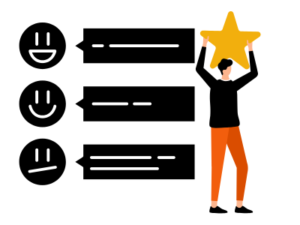
Making Your Feedback Actionable
Okay, we’ve found the hidden gems—now what? Insights only become valuable when you act on them. Use NLP’s nuanced analysis to build data-driven strategies. If you notice an uptick in requests for integrations with certain tools, bump that feature request up the priority list. If a subset of users consistently praises your mobile app layout, consider replicating parts of its design across other platforms. By digging into the root of feedback with NLP, you get clarity and direction.
A Fresh Perspective
When you let NLP guide you through user feedback, you’ll come away with a clearer picture of what your users want, need, and expect. It’s almost like upgrading your listening skills—but for your entire product team. User feedback transforms from a vast, unclear mess into a data-rich map that points you toward growth opportunities.
So, tap into the power of NLP and start exploring the hidden gems in your user feedback. Who knows? You might find your next big feature idea—or even avoid a looming crisis—just by unlocking the insights waiting in plain sight.
How to Use NLP for Spotting Patterns That Humans Might Miss
Let’s face it – when it comes to reviewing mountains of user feedback, it’s easy for us humans to miss the subtle patterns hidden in the noise. That’s where Natural Language Processing (NLP) swoops in like a superhero with a magnifying glass, helping us uncover trends that would otherwise go unnoticed. Let’s dive into how NLP can achieve what even your most intuitive team members might overlook.
Why Humans Struggle With Large-Scale Feedback
When users share their thoughts, they do so in incredibly diverse ways – phrasing their concerns, praising features, or suggesting improvements in countless permutations. For humans, spotting trends in this free-form buffet of feedback can feel a lot like trying to catch individual raindrops in a storm. It’s overwhelming!
Even if each team member diligently reads and categorizes feedback manually, there’s room for personal bias, fatigue, and error. NLP, on the other hand, is built to handle vast quantities of data at lightning speed while remaining laser-focused. It detects patterns that might not align with human intuition, leading to fresh insights that can truly transform your SaaS product.
Where NLP Shines in Pattern Detection
Here are some ways NLP can blow your mind with its pattern-spotting prowess:
- Sentiment Analysis: NLP can assess the tone or emotional weight of a user’s feedback. Imagine being able to detect if a particular group of users is frustrated with a feature before the complaints pour in!
- Topic Clustering: With NLP, user feedback that seems unrelated at first glance can be grouped into overarching categories – perhaps revealing that “slow-loading times” and “app crashes” often occur together as part of a broader issue.
- Keyword Frequency: NLP tools can surface the most commonly mentioned terms or phrases, giving you a glimpse into what’s top-of-mind for your users without requiring hours of manual work.
- Uncovering Hidden Context: Ever had feedback like, “It’s annoying that it doesn’t work”? NLP can analyze surrounding words and phrases to identify what “it” is – something tricky for humans to decipher on a large scale.
Using NLP Tools for Spotting Patterns (No PhD Needed!)
You don’t need to be a data scientist to get started with NLP – many tools today are user-friendly and designed for folks just like you. Some beginner-friendly approaches include:
- Implementing NLP libraries like SpaCy or NLTK to automate text analysis.
- Relying on cloud-based NLP implementations like Google Cloud Natural Language or AWS Comprehend.
- Exploring plug-and-play tools like MonkeyLearn or Lexalytics.
These tools allow you to input raw user feedback and extract patterns and insights at a fraction of the time and effort it would take to do manually.
Fine-Tuning Insights for Your SaaS
The secret sauce to using NLP effectively in pattern detection is blending it with human oversight. Think of NLP as your first-pass filter: it consolidates and identifies patterns, but you and your team decide which of these insights are actionable for your product.
When used wisely, NLP can help you pinpoint persistent user pain points, spot emerging trends, and even anticipate concerns before they snowball. It’s like having a spotlight uncovering hidden treasures in your feedback!
Turning Freeform Text into Actionable Insights
Let’s be honest—user feedback is a goldmine. But much of it arrives in the form of freeform text: open-ended comments, survey responses, or even tweets filled with emojis. Extracting something useful from this can feel like trying to drink from a firehose. But with the right approach (and some helpful Natural Language Processing or NLP tools), you can take that messy text data and transform it into actionable insights for your SaaS product. Let’s dive into how this works!
Step 1: Organize Your Feedback
Before jumping to analysis, structure your data. Imagine that user feedback is like a room filled with puzzle pieces. To make sense of it, you first need to group similar pieces together:
- Start by categorizing feedback by themes like design, feature requests, or pricing issues.
- Use topic modeling, a handy NLP technique, to automatically identify recurring topics. Algorithms like Latent Dirichlet Allocation (LDA) can cluster related keywords—helping you see patterns you might otherwise miss.
- Break down feedback by segments, such as demographics or user personas, for deeper insights.
Once you’re organized, your raw text feedback will look less chaotic. You’re laying a solid foundation to uncover those “Aha!” moments.
Step 2: Extract Sentiment
Sentiment analysis is one of the most common ways NLP shines in feedback analysis. By analyzing tone, words, and context, sentiment models can determine whether users feel positive, neutral, or negative about your product. Here’s where it gets interesting:
- Spot trends: If you’ve just released a feature update, you can instantly see if feedback skews positive or if users are frustrated.
- Identify pain points: If a chunk of negative feedback refers repeatedly to a specific feature or bug, it’s a clear signal for improvement.
- Create priorities: Segment user sentiment by themes to decide what needs immediate action versus long-term consideration.
Not only does sentiment analysis build a clear picture of user satisfaction, but it helps you focus on the specific improvements that matter most.
Step 3: Highlight the Game-Changing Insights
Now comes the fun part. With your feedback organized and sentiment analyzed, it’s time to dig for insights that can guide product strategy. Here’s how you fine-tune the process:
- Keyword Analysis: Spot repetitive words or phrases that signal demand. Maybe the word “faster” appears frequently for performance-related requests.
- Weighted Themes: Certain feedback themes tend to carry more business impact. NLP tools can assign weights to categories based on how frequently they arise and their sentiment score.
- Emerging Trends: Use NLP to monitor evolving feedback patterns over time. Noticing more mentions of “AI-powered tools” in your comments? Perhaps it’s time to enhance your product with AI functionalities!
Feedback isn’t just a review of the past—it’s a crystal ball for what your users are thinking, feeling, and hoping your product can solve for them. The right tools help you spot these trends early and act before competitors do.
Why This Matters
Tuning into user feedback with NLP is more than a technical exercise—it’s about building trust with your users. When you truly “hear” what they’re saying and act on it, you increase satisfaction, loyalty, and even advocacy. After all, isn’t that the dream for your SaaS product?
Real-World Cases Where SaaS Thrived Using NLP
If you’re wondering whether Natural Language Processing (NLP) can truly make a difference in your SaaS product’s success, let’s dive into some inspiring real-world examples. These stories demonstrate how leveraging NLP can reshape your approach to user feedback and unlock a treasure trove of actionable insights.
1. Automating Customer Sentiment Analysis in Helpdesk Software
Who hasn’t filed a lengthy customer support ticket, right? Ticketing systems like Zendesk are now using NLP to analyze the tone and sentiment of messages. This means that customers sounding frustrated can be fast-tracked to a priority queue, while calmer messages might follow a different route. Users rave about this because it feels like they’re being truly heard!
Using sentiment analysis ensures your customers know they matter. And isn’t that exactly what SaaS is about—delivering a customer-first experience?
2. SaaS Platforms Turning Churn into Learning
Churn is the arch-nemesis of SaaS businesses. But here’s where savvy solutions like Gainsight have proven transformative. Gainsight integrates NLP into their platform to analyze feedback from users who leave, like cancellation forms, support chat transcripts, or even social media rants.
By using topic modeling and sentiment analysis, Gainsight clients can identify trends that lead to churn—like complaints about a buggy feature or unclear pricing. This allows businesses to take quick and decisive action to stop others from walking out the door. Imagine saving hundreds (or thousands!) of users this way. That’s not just clever—it’s gold!
3. Personalized Product Experiences with NLP
Ever felt a SaaS product evolve almost magically in sync with your needs? Personalization giants like HubSpot use NLP to analyze qualitative user feedback and design features tailored to what customers are asking for. For instance, NLP helps surface recurring themes such as, “I wish I had better report templates” or “The email automation is too basic.” These insights guide product updates that feel targeted and relevant.
Why is this so effective? Because meaningful personalization fosters emotional loyalty. The customer feels like, “This product gets me!”
4. Elevating Employee Engagement in Team Software
It’s not just customer-focused SaaS products that benefit. Look at employee-facing platforms like Slack or Officevibe, where internal feedback is equally critical. By using NLP, these tools can parse through freeform comments from employee surveys to identify common pain points or positive trends.
For example, NLP-fueled analysis might reveal that “remote communication woes” are a growing theme, prompting HR teams to implement new training sessions or better tools. No more manual sifting through feedback! Just actionable insights that make workplaces happier and more productive.
Why Does This Matter for You?
Seeing these case studies, it’s clear that NLP isn’t a luxury—it’s rapidly becoming a necessity. From reducing churn to creating personalized user journeys, the advantages are hard to ignore. Whether you run a startup, mid-market SaaS, or even an enterprise-grade platform, there’s a lesson here: NLP isn’t just tech; it’s a mindset for growth and user empathy.
- Pro Tip: Choose NLP tools or services that integrate seamlessly into your SaaS stack. Don’t just chase shiny features; consider their long-term potential for empowering customer-centric decisions.
- Remember: Start small—experiment on a specific feedback channel or dataset before deploying NLP across the board.
Avoiding Common Mistakes When Applying NLP in SaaS Applications
If you’re diving into the world of Natural Language Processing (NLP) to enhance your SaaS product, you’re probably excited to tap into its power. But, hold your horses for a second. While NLP can unlock incredible insights, it’s not without its pitfalls. It’s easy to trip up if you’re not careful. Let’s explore the common mistakes SaaS companies make when implementing NLP and, more importantly, how to sidestep them.
1. Skipping Proper Data Cleaning
One rookie mistake when applying NLP to user feedback is neglecting the first and most crucial step: cleaning your data. Language data is messy! Filled with typos, slang, emojis, and inconsistencies, raw data needs thoughtful preprocessing. If you feed noisy data into your NLP model, you’ll likely end up with noisy results. Here’s what you should do instead:
- **Automate text normalization**: Remove duplicate entries, fix casing (hello, ALL CAPS), and handle typos.
- **Filter out irrelevant noise**: Think unnecessary punctuation, excessive whitespace, or unrelated strings.
- **Account for language diversity**: Global SaaS products often receive feedback in multiple languages. Using a language detection tool is key here.
2. Relying on Off-The-Shelf Models Without Customization
Pre-trained NLP models are great starting points, but using them without tailoring can lead to generic or even misleading results. Most SaaS businesses have industry-specific jargon, context, or customer personas that an out-of-the-box solution just won’t understand. To avoid this:
- Add domain-specific training data to refine the model.
- Test with your actual user feedback to discover gaps in understanding.
- Iterate and fine-tune to achieve relevant and contextual predictions.
3. Ignoring Bias in Your Models
Unfortunately, bias in NLP models remains a persistent issue. Pre-trained models may unintentionally carry unfair or stereotypical biases due to the datasets they’re trained on. Applying a biased model to your SaaS feedback risks alienating users. To prevent this:
- Monitor your results for skewed or discriminatory insights.
- Audit your dataset to ensure fair representation of diverse groups and perspectives.
- Use bias-detection tools to evaluate your model’s fairness scores.
4. Focusing on Numbers Without Context
Quantifying feedback is amazing—word frequencies, sentiment scores, and pattern recognition can feel like magic. But NLP isn’t just about gathering stats. Failing to dive into the qualitative side of feedback risks missing the bigger picture. Here’s how to balance the two:
- Pair quantitative metrics with example quotes from user feedback.
- Use clustering or topic modeling to group themes, not just numbers.
- Collaborate with customer success or product teams to interpret results contextually.
5. Expecting Immediate Perfection
NLP implementation is not a plug-and-play magic wand—it takes iteration and continuous improvement to get the results you need. Many SaaS teams expect immediate insights, but this mindset can lead to frustration. Instead:
- Set realistic goals for your initial implementation.
- Focus on small pilots to test methods and measure impact.
- Iterate based on what you learn, enhancing accuracy and relevance over time.
Must-Have Tools and Techniques for Adding NLP to Your SaaS Workflow
So, you’re ready to dive into the world of Natural Language Processing (NLP) and make your SaaS product even smarter? That’s awesome! But before you get started, let’s talk about the tools and techniques that will make adding NLP to your workflow a breeze. No overwhelming jargon here—just straightforward, practical advice to help you hit the ground running!
1. The Tool Arsenal You Need
Let’s start with tools. Think of these as your power tools for taming messy user feedback and extracting gold nuggets of wisdom:
- TextBlob: A simple NLP library for Python. It’s perfect when you’re just dipping your toes into text analysis. Need basic sentiment analysis or keyword extraction? TextBlob’s got you covered.
- spaCy: When you’re ready to level up, spaCy is the go-to. It’s superfast, highly accurate, and comes packed with pre-trained models for analyzing text in dozens of languages.
- NLTK (Natural Language Toolkit): This is another powerhouse for linguistic data processing. Though it’s slightly more academic, it’s great for experimenting with tokenization, stemming, and parsing user text.
- Google Cloud Natural Language API: Not a programmer? No problem! Plug in this API service to analyze sentiment, classify content, or even detect entities with minimal coding effort.
- Hugging Face Transformers: If you’re looking to tap into state-of-the-art technology, this library is your ticket to building AI features with large-scale language models like BERT, GPT, and more.
If your SaaS product relies on a specific tech stack, make sure these tools play nicely with your existing systems. Most are versatile, so chances are good you’ll find something compatible!
2. Core NLP Techniques You Should Master
Picking the right tools is important, but knowing how to use them is equally critical. Here are some must-have techniques to weave NLP into your workflow:
- Sentiment Analysis: Users won’t always tell you outright if they’re satisfied or frustrated. Tools like TextBlob can help you gauge whether feedback is positive, neutral, or negative, so you know what’s working and what needs improvement.
- Topic Modeling: Let’s say you have piles of feedback. Topic modeling (e.g., using libraries like Gensim) helps you group related comments together, so you understand what’s trending among your users—without reading every single submission!
- Entity Recognition: This technique pulls out key names, brands, and other nouns from text. Was your newest feature mentioned often? Did users name specific competitors? Entity recognition answers these questions effortlessly.
- Intent Detection: This is a biggie for product managers. By studying the language of your feedback, you can identify if a user is requesting a feature, reporting a bug, or simply poking around in curiosity.
- Text Summarization: Don’t have time to comb through lengthy customer emails? Automated summarization takes the highlights and serves them up in bullet points for quick reviews.
3. Integrating NLP into Your SaaS Workflow
Alright, you’ve got your toolbox and techniques. Now, how do you fit NLP seamlessly into your SaaS workflow? Here’s how:
- Automate Routine Analysis: Set up automated NLP processes to sift through incoming user feedback. This saves hours of manual effort and ensures no data gets overlooked.
- Collaborate with Your Team: Share analysis results on dashboards or project management tools. Use visualizations to make insights clear and actionable for everyone across the product team.
- Focus on Iteration: NLP models aren’t perfect right off the bat. Continually train them using fresh feedback to make your system smarter over time.
- Use APIs for Real-Time Insights: If your SaaS product relies on live feedback or customer chats, leverage APIs to provide instant insights into trends and sentiment.
4. Key Takeaway
Adding NLP to your SaaS workflow doesn’t need to be intimidating. Start small with simple tools like TextBlob or Google Cloud NLP, then work your way up to advanced libraries like Hugging Face as you grow more confident. It’s okay to experiment—each attempt helps you unlock more value from your user feedback.
At the end of the day, NLP isn’t just a “nice-to-have”; it’s rapidly becoming essential for competitive SaaS products. Why not stay ahead of the game and let NLP guide your product to greatness?
